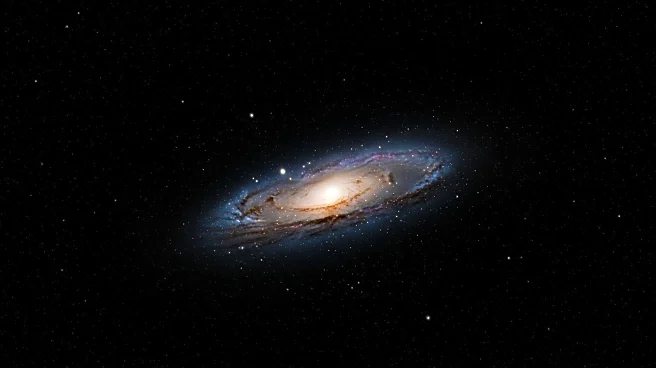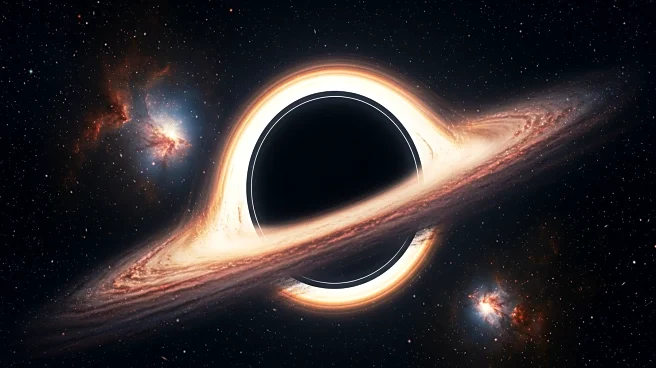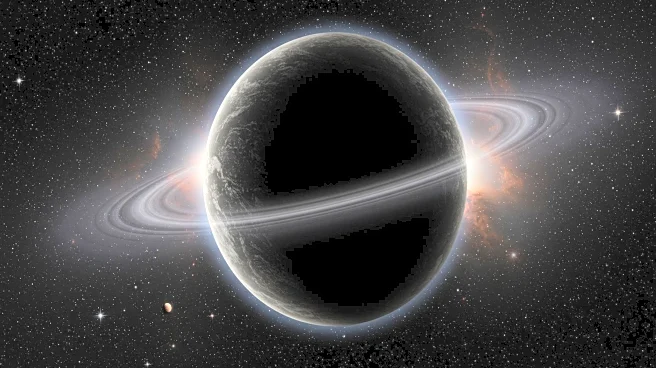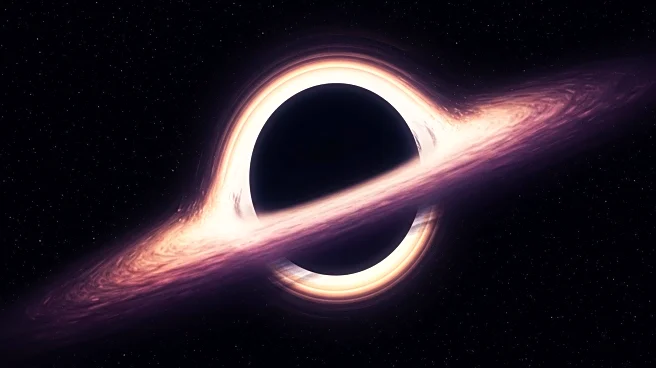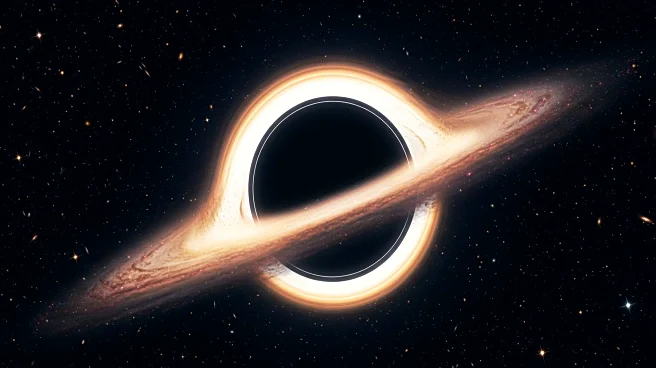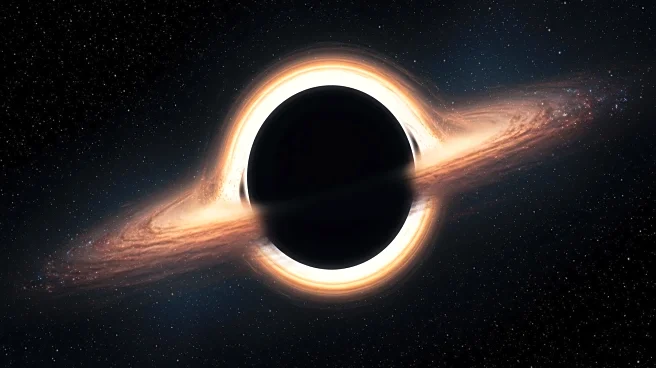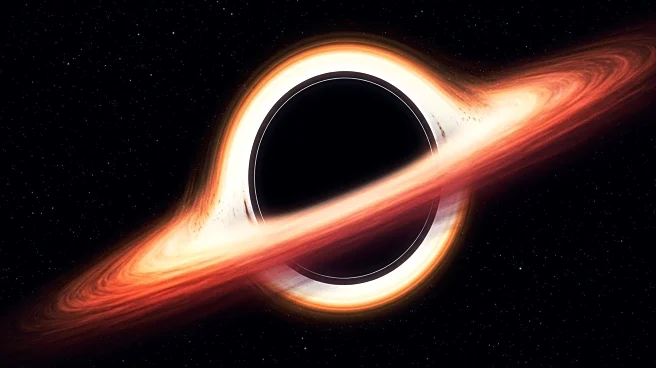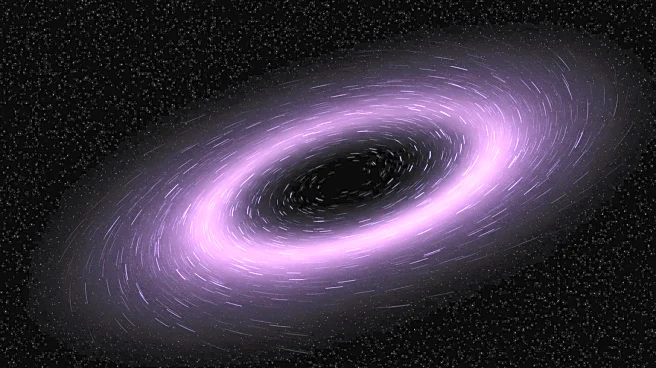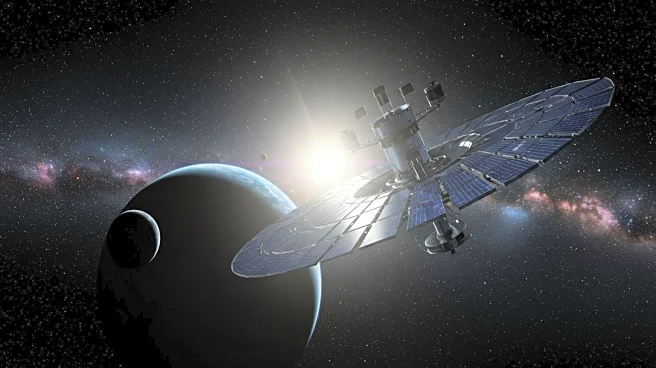What is the story about?
What's Happening?
Researchers have identified a potential new supermassive black hole with an estimated mass 36 billion times that of the sun, located within the gravitational lens known as the 'Cosmic Horseshoe'. This discovery was made by a team from the University of Portsmouth and the Federal University of Rio Grande, using data from the Hubble telescope. The black hole is believed to be at the center of the massive galaxy LRG 3-757, which is about 5.6 billion light-years away from Earth. The mass of the black hole was inferred from the motion of light in the gravitational lens and the velocity of stars in the galaxy, suggesting it could be one of the most massive black holes ever detected.
Why It's Important?
The discovery of such a massive black hole challenges existing theories about the formation and growth of black holes. It suggests that black holes can grow to enormous sizes through the merger of supermassive black holes, possibly resulting from galaxy collisions. This finding could have significant implications for our understanding of galaxy evolution and the dynamics of the universe. It also raises questions about the future of our own galaxy, the Milky Way, and its potential collision with the Andromeda galaxy. The research highlights the importance of gravitational lensing as a tool for studying distant cosmic phenomena and could lead to new insights into the nature of black holes.
AI Generated Content
Do you find this article useful?
